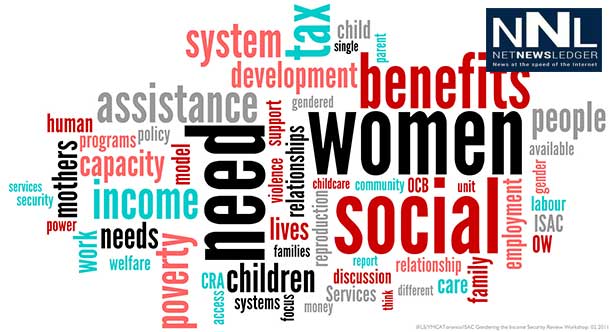OTTAWA – POLITICS – Finance Minister Joe Oliver says, “Economic Action Plan 2015 will create jobs, growth and long-term prosperity. It is a balanced budget, just as we promised, and it cuts taxes for hard-working individuals and families. It is a prudent and principled plan that will see Canadians more prosperous, more secure, and even more confident in our country’s place in the world. Canadians can rest assured that under the strong leadership of Prime Minister Stephen Harper, Canada’s fiscal house is in order.”
Minister of Finance Joe Oliver tabled his much delayed budget, Economic Action Plan 2015.
The Finance Minister says, Economic Action Plan 2015 will:
- Fulfil the Harper Government’s promise to balance the budget in 2015. The Government will return to balanced budgets while maintaining the lowest federal tax burden on Canadians in over half a century.
- Support jobs and growth by making Canada more competitive and allowing job-creating businesses to thrive; making new and innovative investments that build on the Government’s historic support for infrastructure; and training a highly skilled workforce that responds to the evolving needs of employers.
- Help families and communities prosper by continuing to provide tax relief and other support for hard-working families and individuals while enhancing opportunity for all.
- Ensure the security of Canadians by supporting the Canadian Armed Forces and protecting Canadians from the threat of terrorism at home and abroad.
Balancing the Budget:
- The deficit has been reduced from $55.6 billion at the height of the Great Recession to a projected surplus of $1.4 billion for 2015–16.
- The Harper Government paid down $37 billion in debt before the Great Recession, an important reason why Canada’s total government net debt burden is the lowest of any Group of Seven (G-7) country and among the lowest of the G-20 countries.
- Balanced budget legislation will be tabled to enshrine in law the Harper Government’s responsible fiscal management policy that is creating jobs and putting more money back into the pockets of Canadians.
- A balanced budget allows the Harper Government to cut taxes further for Canadian families and individuals.
Supporting Jobs and Growth:
- Reducing the small business tax rate to 9 per cent by 2019—putting an estimated $2.7 billion back into the pockets of job-creating small businesses and their owners between now and 2019–20.
- Providing manufacturers with a 10-year accelerated capital cost allowance to encourage productivity-enhancing investment in machinery and equipment.
- Increasing the Lifetime Capital Gains Exemption to $1 million for owners of farm and fishing businesses.
- Improving access to financing for Canadian small businesses through the Canada Small Business Financing Program.
- Expanding the services offered through the Business Development Bank of Canada and Export Development Canada to help small and medium-sized businesses.
- Providing $14 million over two years to Futurpreneur Canada in support of young entrepreneurs.
- Supporting the Action Plan for Women Entrepreneurs to help women business owners succeed.
- Helping innovative companies grow and create jobs through the Venture Capital Action Plan.
- Supporting provinces and territories to facilitate the harmonization of apprenticeship training and certification requirements in targeted Red Seal trades.
- Investing in world-class research and development by providing over $1.5 billion in funding over five years to advance the Government’s renewed science, technology and innovation strategy.
- Continuing to provide $5.35 billion per year on average for provincial, territorial and municipal infrastructure under the New Building Canada Plan.
- Investing $750 million over two years starting in 2017–18, and $1 billion per year thereafter, for a new Public Transit Fund aimed at building new public transit infrastructure to reduce congestion and fight gridlock in large cities.
Helping Families and Communities Prosper:
- Increasing the Tax-Free Savings Account annual contribution limit to $10,000, effective for 2015 and subsequent years.
- Reducing the minimum withdrawal factors for Registered Retirement Income Funds to permit seniors to preserve more of their retirement savings to better support their retirement income needs.
- Supporting seniors and persons with disabilities by introducing the Home Accessibility Tax Credit to help with renovation costs to make their homes safer and more accessible, so that they can live independently and remain in their homes.
- Enhancing access to post-secondary education by expanding the eligibility for Low- and Middle-Income Canada Student Grants to students in short-duration programs.
- Making the Canada Student Loans Program work for families by reducing the expected parental contribution under the needs assessment process.
- Supporting the most vulnerable in our communities by providing $150 million over four years, starting in 2016–17, to support social housing in Canada by allowing social housing providers to prepay their long-term, non-renewable mortgages without penalty.
- Improving access to print materials for the visually impaired.
- Providing $5.7 million over five years to help secure new market access for Canadian seal products.
- Ensuring veterans and their families receive the support they need by: providing a new Retirement Income Security Benefit to moderately to severely disabled veterans; expanding access to the Permanent Impairment Allowance for disabled veterans; enhancing the Earnings Loss Benefit for disabled part-time Reserve Force veterans; creating a new tax-free Family Caregiver Relief Benefit to recognize caregivers; and increasing the level of individualized support to veterans.
- Extending Employment Insurance Compassionate Care Benefits from six weeks to six months to better support Canadians caring for gravely ill and dying family members.
Ensuring the Security of Canadians:
- Increasing National Defence funding by providing the Canadian Armed Forces with close to $12 billion over 10 years, thus ensuring that Canada can continue to field a combat-capable military ready to serve at home and abroad.
- Supporting the deployment of the Canadian Armed Forces by providing National Defence with up to $360 million in 2015–16 in order to counter ISIS.
- Countering terrorism by providing additional resources to the Royal Canadian Mounted Police, the Canadian Security Intelligence Service and the Canada Border Services Agency.
- Enhancing Canada’s capacity to gather foreign intelligence.
- Protecting the integrity of our borders and facilitating legitimate travel to Canada for low-risk travellers from select visa-required countries.
Quick facts starts here
Quick Facts
- A typical two-earner Canadian family of four will receive tax relief and increased benefits of up to $6,600 in 2015 because of the Harper Government’s tax cuts and increased benefits.
- The Government has lowered taxes every year since coming into office. In fact, the overall federal tax burden is now at its lowest level in more than 50 years.
- Over 1.2 million more Canadians are working now than at the end of the recession in June 2009. The majority of these net new jobs have been full-time positions in high-wage, private-sector industries.
- Canada has demonstrated one of the best economic performances among G-7 countries over the recovery.
- Real GDP (gross domestic product) is significantly above pre-recession levels—the best performance in the G-7.
- The World Economic Forum rated Canada’s banking system as the soundest in the world for the seventh year in a row in its annual Global Competitiveness Report.
- According to KPMG, total business tax costs in Canada are the lowest in the G-7 and 46 per cent lower than those in the United States.
- Bloomberg has ranked Canada the second most attractive place in the world to do business.
- Four credit rating agencies—Moody’s Investors Service, Fitch Ratings, Standard & Poor’s and DBRS—have reaffirmed their top ratings for Canada, and it is expected Canada will maintain its AAA rating in the year ahead.







